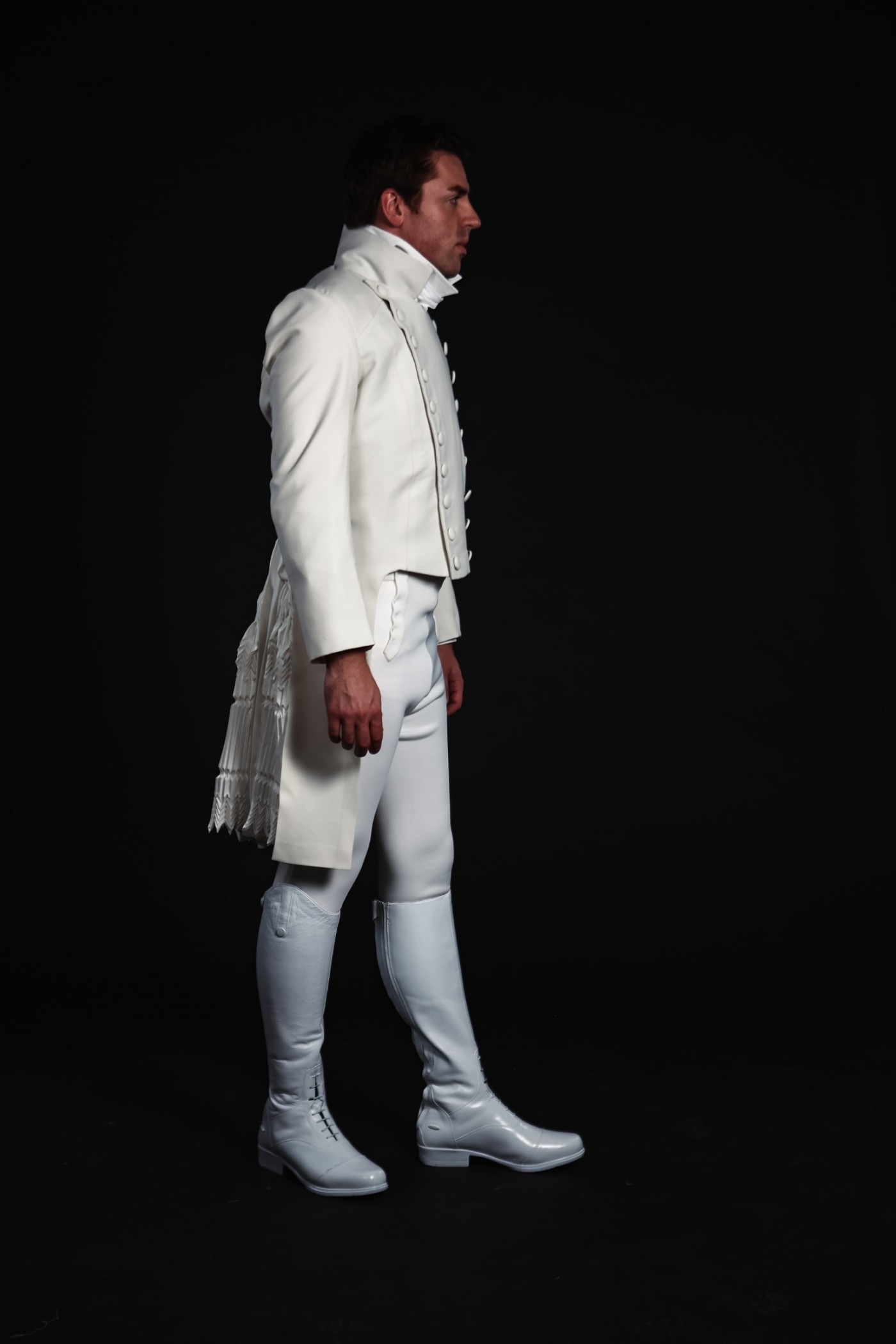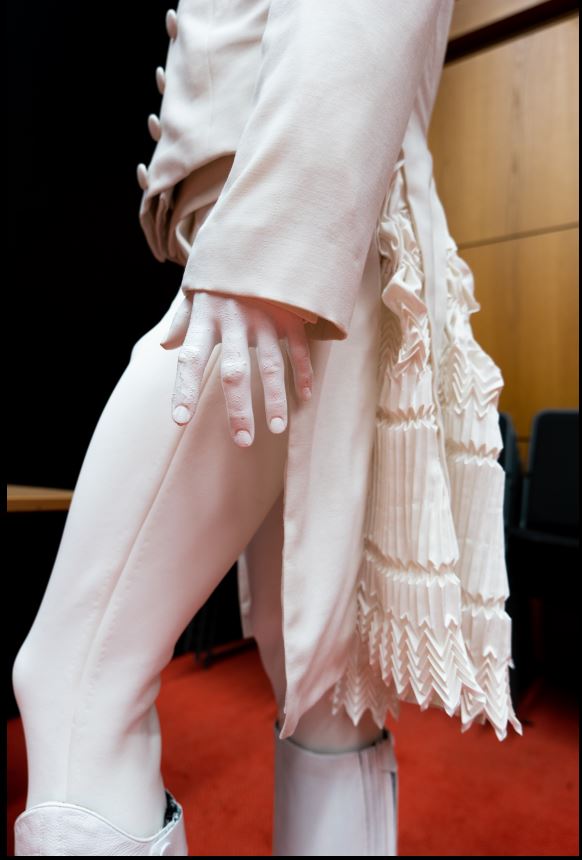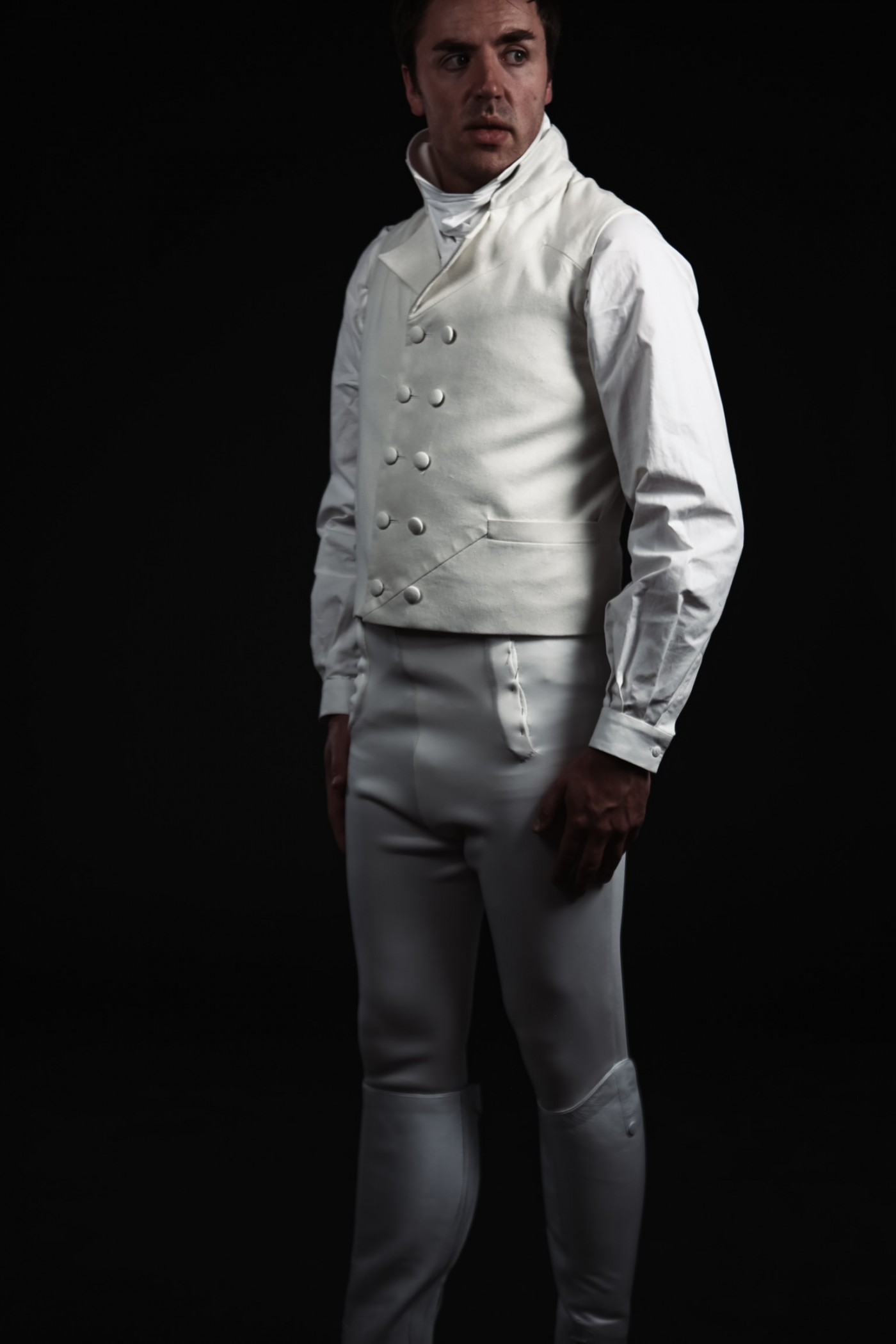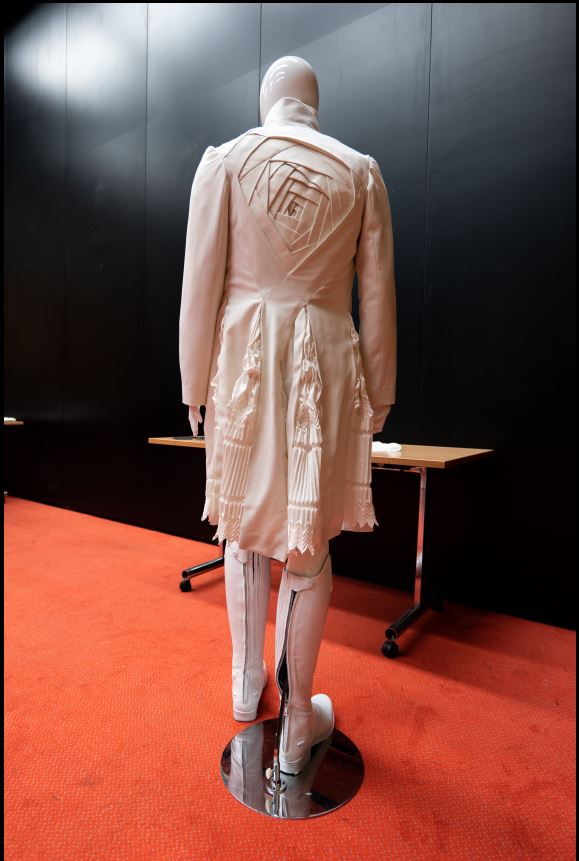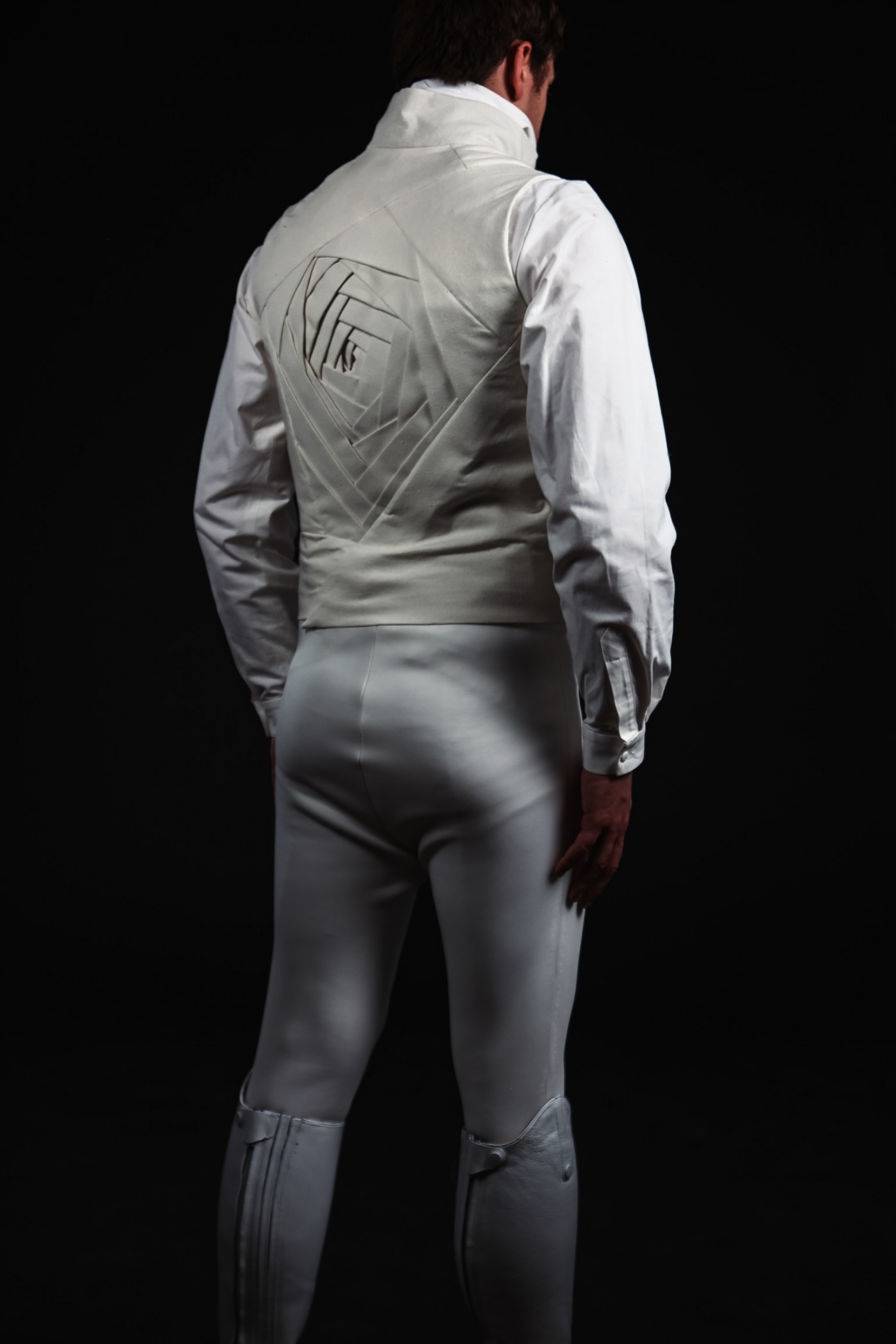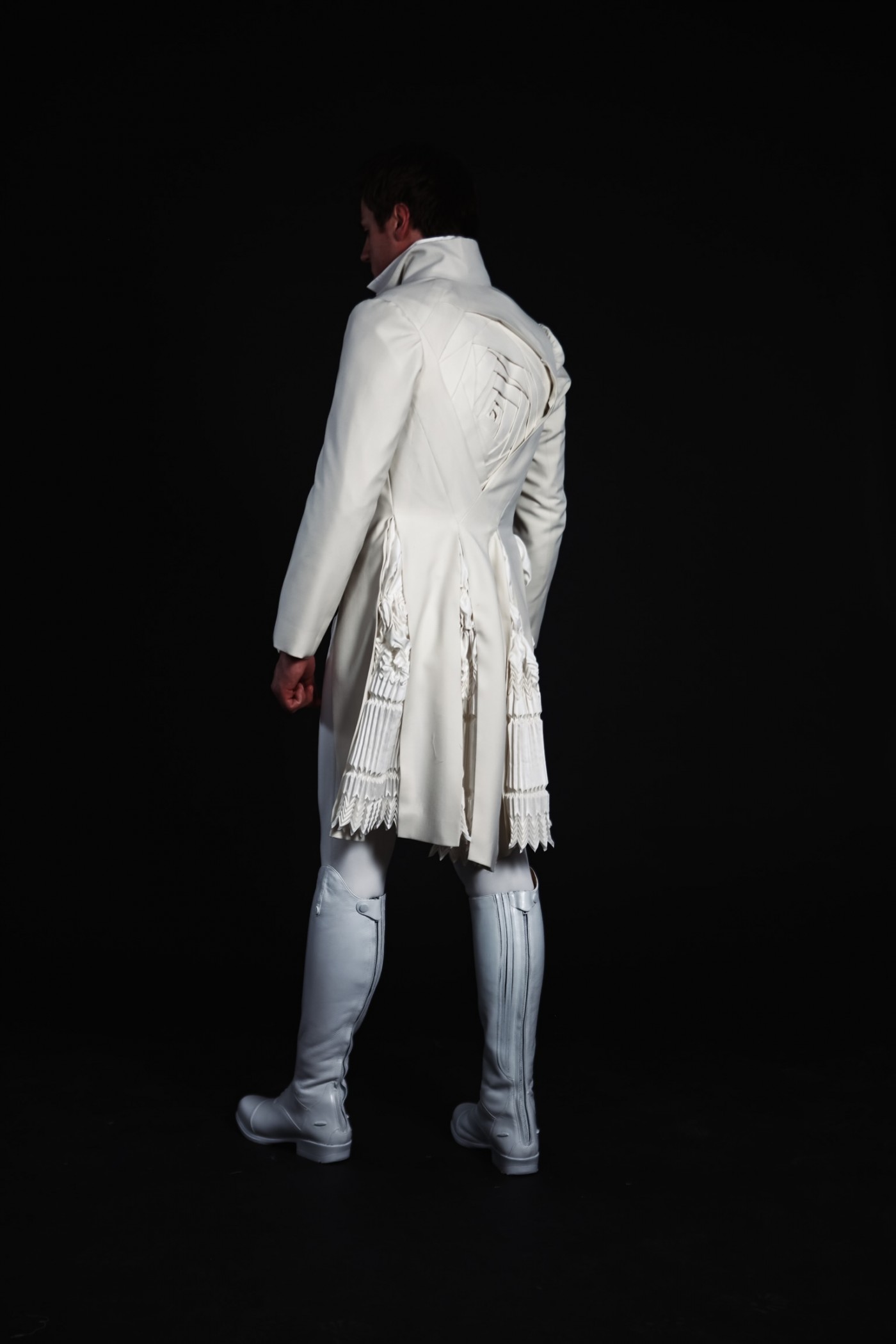- youtube
- bluesky
- Home
- About
- Costume Journal
- Membership
- Conference & Events
- Grants & Awards
- News & Social
In this week's blog post, the winner of the Patterns for Performance award 2022, Caroline Husband, tells us about her thoughts and making processes behind her captivating winning costume, a suit for the character of Herman from Tchaikovsky’s The Queen of Spades. Launched in 2019, The Patterns for Performance award encourages students to design a period garment for a character in a performance.
This project started in September 2021, as I decided to take part in the Patterns for Performance competition while completing my last year of University at Wimbledon College of Arts. I chose to work on the main character Herman from the Opera The Queen of Spades by Tchaikovsky (1887). The themes of this story piqued my interest immediately: madness, obsession, love, fate, war and death.
The first step of my design process was to find a concept that would work with the context and the themes of the opera, yet also one I would enjoy designing and doing research around.
The Opera was written in 1887, yet the story it is based on was published in 1834. I believe that people in 1887 understood the play differently than an audience would in 1834 or indeed we today. I adore historical costumes; however, I also desired to implement a twist in this project as the story is about obsession and corruption of the soul. I did not want to recreate any of these two periods accurately on stage. Yet, I immediately linked the themes of this play with the Napoleonic war, and the Arts movements evolving around this period while reading the text and analysing the characters.
Herman being a soldier, I researched uniforms following my chosen period and concept, researching French, English and Russian military wear. Using both the collection of the Victoria & Albert Museum and the National Army Museum, I tried to understand the shape of formal and military menswear in my chosen period. Nevertheless, I quickly realised that my costume only needed to resemble a uniform; the audience would understand he was a soldier on stage even without all the elements that made all these garments so recognisable. Moreover, the cuts of all the different armies were fairly similar, only the colours and decorations separated them.
Whilst I was pursuing my research on Menswear during the Napoleonic war, I was also looking into the two prominent art styles around this period: gothic and romanticism.
The concept of the gothic genre fascinates me, I think that it’s the epitome of the relationship between Humans and Monsters, and how linked they are. The character of Herman is a monster disguised in a human suit. He appears normal to the other characters, yet he is obsessive and willing to let people die for his success. This idea of the monster-within was exactly what I wanted to represent on stage. This grotesque character appeared to me like he was filled with darkness that was just waiting for the right occasion to flow from him, and tainting everyone around him. This image, reminded me of the description of the romanticism movement by Charles Baudelaire:
“Romanticism is precisely situated neither in choice of subject, nor exact truth, but in the way of feeling.”, (Charles Baudelaire, 1846)
The intensity of the feelings that engulf Herman was an important part of his concept.
My next task was to understand how to represent these feelings, Herman’s depth on a stage, in front of a live audience. The Characters would be living in their world whilst we, the audience discover their hidden darkness. Projection mapping appeared to be an interesting medium to be able to show the intensity of the characters’ feelings during their performance. Often used over monuments to create shows of light, projection mapping has appeared also in Fashion shows during the last few years. This technic even allows to project imagery or video on garment, while the performer is moving on stage. Revealing hidden thoughts, pain, or in the case of Herman, his underlying darkness. Using projection to create ephemeral hints of what is happening in the heart of the characters seemed a truly contemporary idea yet empowering the ancient concepts of both Art Movements.
As projection mapping is a more modern medium, I decided to add a contemporary twist to my concept by looking into Haute Couture. The design needed to have a historical figure, yet I wished to incorporate a present-day element. My research led me to discover the work of Tomoko Fuse, an incredible Japanese pleat designer. The structure she is able to create with only paper truly fascinated me and I needed then to find a way to incorporate these new ideas into a historical garment. The infinity pleats in the back of the character came to me as it reminded me of a pile of cards. This was to accentuate the idea of corruption, representing a hole in his soul, from where the darkness oozes out from.
After having designed the costume, using all the elements from my research, I started my patterns research, looking at both Janet Arnold and Norah Waugh’s books. The only part that was missing was any military garments. However, as military uniform greatly influenced early 19th century fashion, I decided to choose one of the coats that were the closest to my design and transform the pattern.
The waistcoat and coat were the most intricate garments I have ever made. It took me at least four fittings to get them right. The first one was the most difficult, I took the patterns directly from the book, and did the most correction I could. However, the armholes and the centre front of both garments needed a lot of changes. This part was essential for me to avoid struggling later as I knew after this fitting that my patterns were working on my model. It was the correct base to start creating my design.
The infinity pleats in the back of the waistcoat were not made from a pattern. I wished to include this element of luck as Herman is obsessed with gambling. I worked directly on the mannequin and sewed every pleat by hand. This created a lot of thickness that I had to sew over after.
The body canvassing was the new making element I learned during this project. Entirely done with hand-stitches, this part took me the longest to get right. This element of the making is essential in the process of tailoring a coat, or a waistcoat. It gives structure to the bust and defines a pleasing shape over the body. I discovered all the different layers and hand stitching such as the pad-stitch, needed to create the right structure for the coat. Pad stitching was such a long part, yet enjoyable as I had as a companion the audiobook of Pride and Prejudice.
The Patterns for Performance 2022 Award project taught me enormously in both design and making. I am extremely thankful to everyone who helped me throughout all of it. This was an incredible challenge and I enjoyed every part of it.
To find out more about the patterns for performance award and to see previous award winners see our awards page here.
Image gallery
